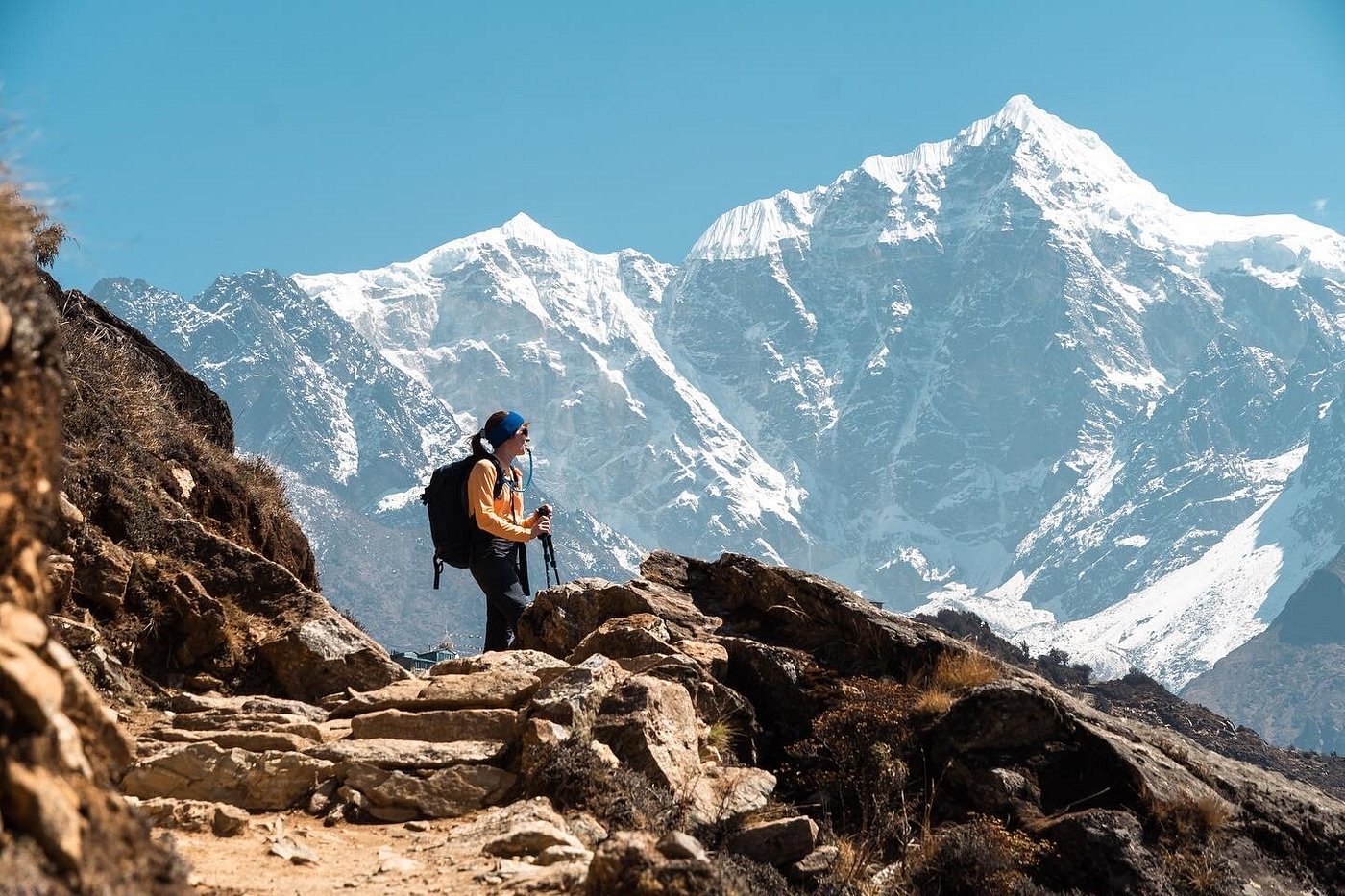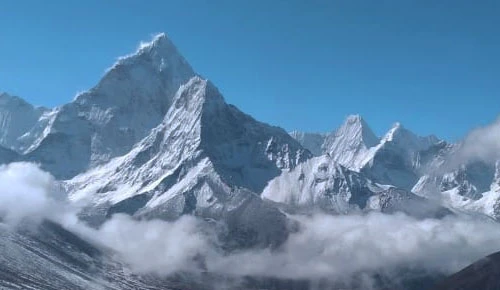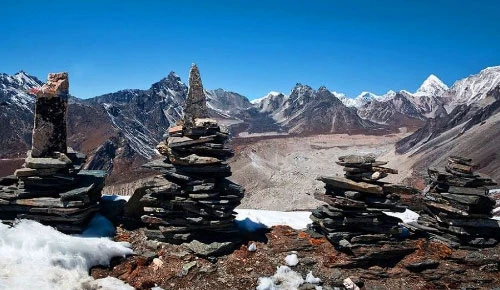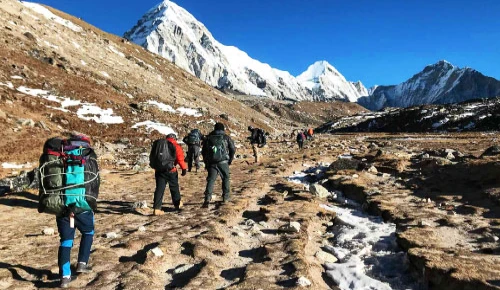Elevation Gains On the Everest Trail
The Everest Base Camp trek is a challenging yet rewarding journey that takes hikers through some of the most spectacular scenery in the world. The trail winds through the Everest region of Nepal, past towering peaks, pristine glaciers, and traditional Sherpa villages. The trek typically takes 12–15 days, with the highest point being Kala Patthar at 5,644 meters (18,516 feet).
The trek begins in Lukla, a small mountain airstrip that requires a hair-raising flight through the Himalayan peaks. As the wheels touch down on the Lukla runway, you find yourself at an elevation of approximately 2,860 meters (9,383 feet). The adventure has officially begun, and the anticipation is palpable.
In this blog, we'll delve into the significance of elevation gains on this remarkable journey. Elevation gains, which are the increases in height above sea level as you trek, play a crucial role in determining the difficulty and challenges you'll face along the way.
Understanding these gains is essential for anyone planning to trek in the Everest region. So, join us as we explore the highs and lows of the Everest Trail and how elevation gains make this adventure truly remarkable.
Table of Contents
Elevation Gains Table
Popular Route | Starting Elevation (m) | Ending Elevation(m) | Elevation Gain (m) |
Lukla to Namche Bazaar | 2,840 | 3,440 | 600 |
Namche Bazaar to Tengboche | 3,440 | 3,867 | 427 |
Tengboche to Dingboche | 3,867 | 4,350 | 483 |
Dingboche to Lobuche | 4,350 | 4,910 | 560 |
Lobuche to Everest Base Camp | 4,910 | 5,364 | 454 |
Everest Base Camp to Kala Patthar | 5,364 | 5,644 | 280 |
A detailed explanation of the above table
The initial stretch from Lukla to Phakding eases you into the trek. A gentle descent leads to the Dudh Koshi River, where suspension bridges sway in the mountain breeze. It's a mellow introduction to the Everest trail, and you'll spend your first night at around 8,563 feet (2,610 meters) in Phakding.
From Phakding, the trail gradually ascends along the riverbanks, with pine forests offering shade and serenity. As you reach Namche Bazaar, your altitude is approximately 11,286 feet (3,440 meters). A natural amphitheater with soaring peaks surrounds this bustling Sherpa town. The air is noticeably thinner here, serving as a reminder of the altitude gains to come.

Acclimatization in Namche is crucial, and an ascent to the Everest View Hotel at 12,687 feet (3,867 meters) is a must. The reward is a breathtaking panorama of Everest and its neighboring giants. It's a personal challenge and a moment to take in the grandeur of the region.
Tengboche, at an elevation of around 12,687 feet (3,867 meters), is your next stop, with a beautiful monastery overlooking the mountains. The path to Dingboche is grueling but rewarding. You'll find yourself at 14,470 feet (4,410 meters) in this remote village, where you must acclimatize further.
Pushing on to Lobuche at 16,207 feet (4,940 meters) and Gorak Shep at 16,942 feet (5,164 meters), you're nearing the pinnacle of your journey. The air is thin, and every step is a testament to your determination. The final ascent to Kala Patthar at 18,514 feet (5,643 meters) is the culmination of your trek, offering unrivaled views of Mount Everest.
Managing with Elevation Gain on Everest Trial
The rapid elevation gain on the Everest Base Camp trek can lead to altitude sickness, which can cause symptoms such as headaches, nausea, fatigue, and shortness of breath. To minimize the risk of altitude sickness, it is important to gradually acclimate to the higher altitude. This means ascending slowly and taking rest days to allow your body to adjust to the thinner air.
Here are some tips for dealing with elevation gain during the trek:
- Hike slowly and take plenty of breaks.
- Drink plenty of water and fluids.
- Eat regular meals and snacks.
- Listen to your guide, who has years of experience, making them a reliable source of information.
- Get enough sleep.
- Listen to your body and rest when you need to.
Additional Information for for Managing Elevation Gain
In addition to the elevation gains, there are a few other things to keep in mind when planning your trip:
- The weather can be unpredictable, so be sure to pack for all types of weather conditions.
- The trail can be crowded, especially during peak season, so be prepared to share the trail with other hikers.
- There are a number of lodges and guesthouses along the trail, so you will not need to camp.
- You will need to obtain a trekking permit before you start your trek.
Conclusion: A Journey of Ascents and Descends
Standing at the foot of Mount Everest, the world's highest peak, one feels a surge of exhilaration mixed with fear. The journey ahead is no ordinary feat. It was a challenge that demanded not only physical strength but also mental fortitude. And at the heart of this challenge lay the relentless ascent—the relentless gain of elevation that would test our limits and push us to our greatest heights.
The trek is a journey of ascents and descents, not just in terms of elevation but also in terms of physical and mental endurance. It is a voyage that pushes us to our limits and beyond, revealing our inner strength and resilience. And as we stand at the base of Mount Everest, awestruck by its grandeur, we are aware that we have triumphed not just over a mountain but also over ourselves.
I hope this blog post has given you a better understanding of the elevation gains on the trek. If you are considering this trek, I encourage you to do your research and prepare both physically and mentally. With the right preparation, you can experience this incredible journey for yourself. Also, we can help you elevate your trekking experience to the next level. Book your trek with us and enjoy your trekking journey hassle-free.








